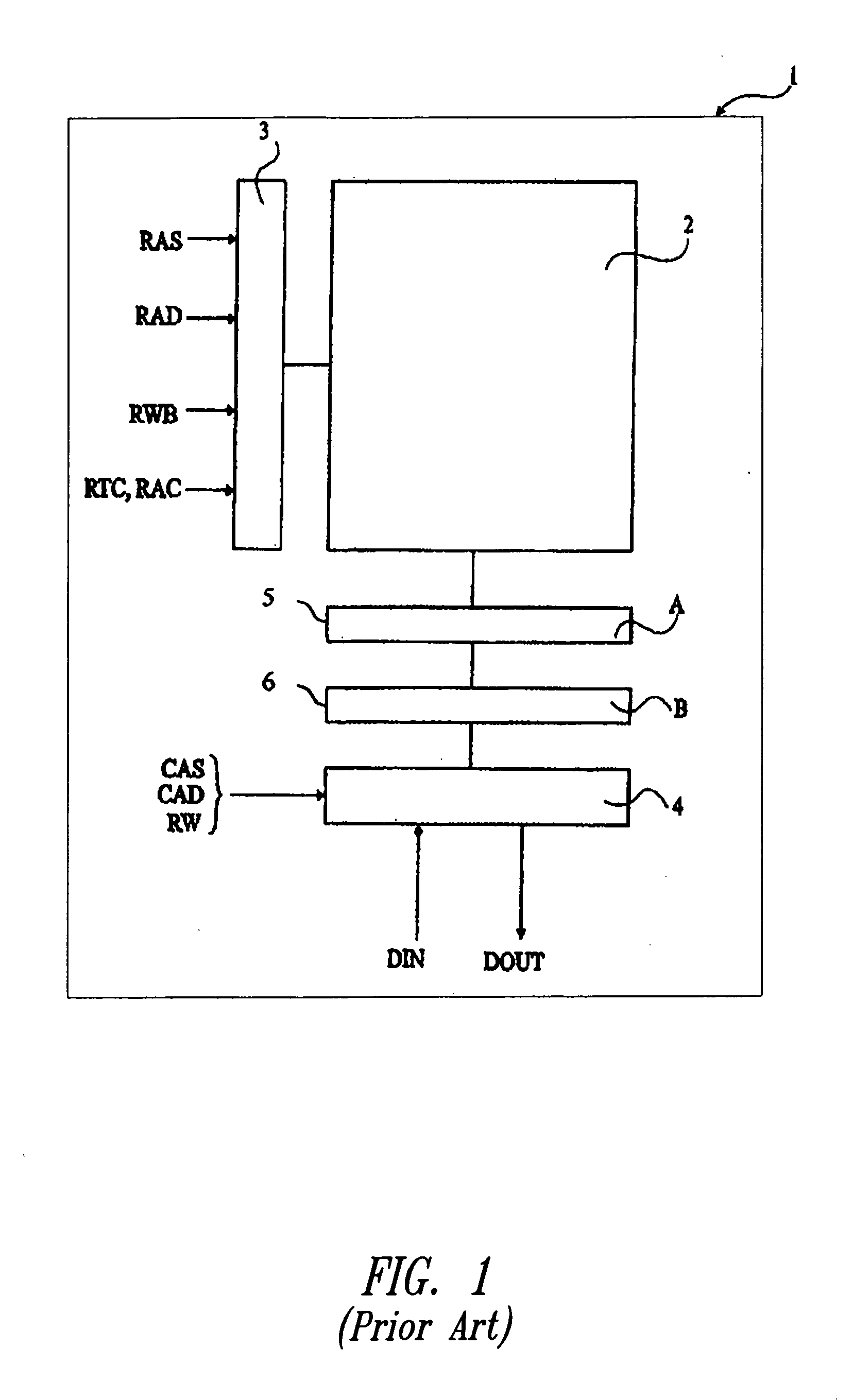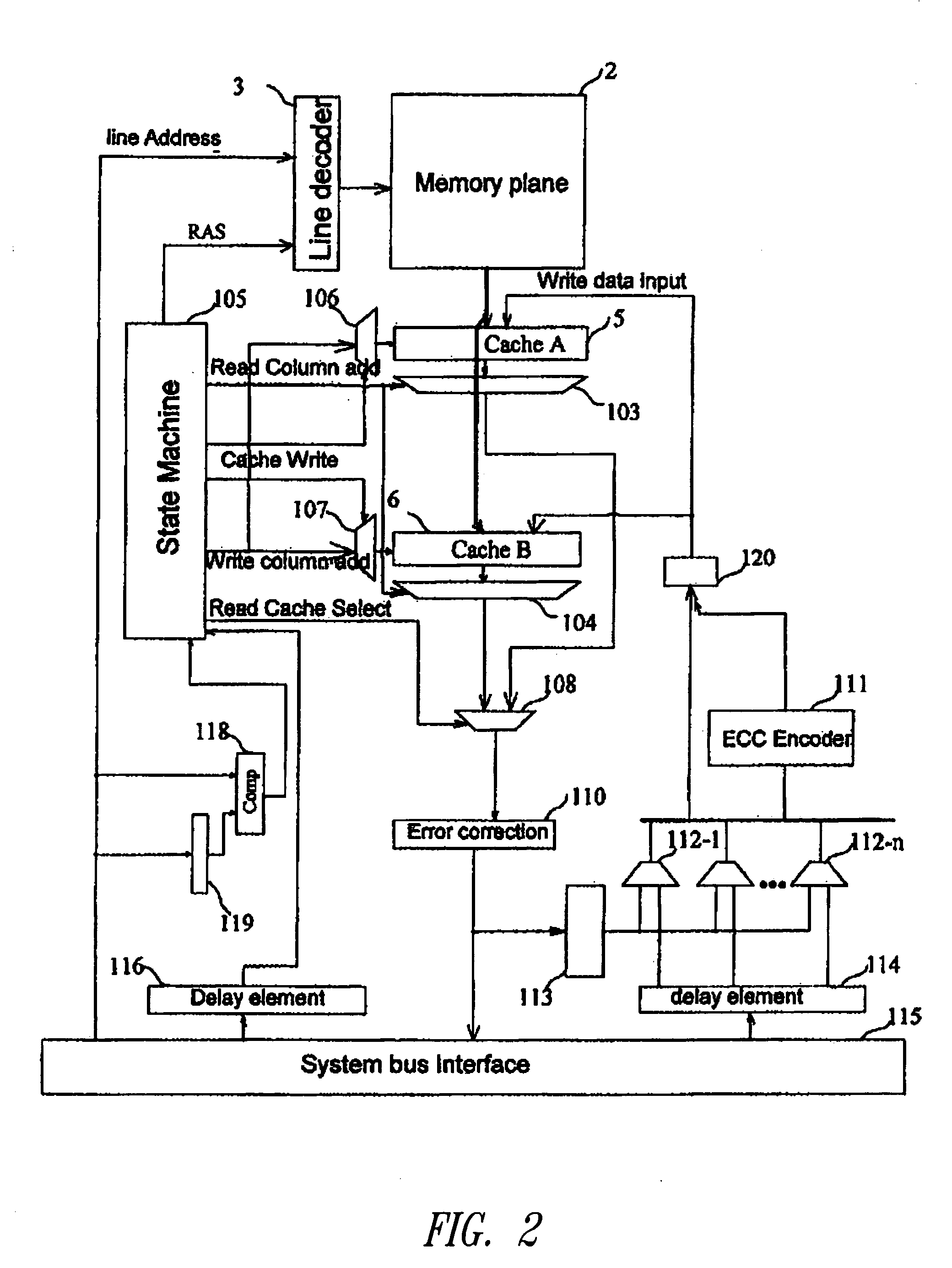Dynamic random access memory having at least two buffer registers and method for controlling such a memory
a random access memory and buffer register technology, applied in the field of memory, can solve the problems of slow access, limited and narrower than that of static memories, and achieve the effect of increasing bandwidth
- Summary
- Abstract
- Description
- Claims
- Application Information
AI Technical Summary
Benefits of technology
Problems solved by technology
Method used
Image
Examples
second embodiment
[0067] In this second embodiment, there is a set of master flip-flops—440-0 to 440-15—which are common to bits of the same row for all the words of one page.
[0068] The set of master flip-flops 440-0 to 440-15 then constitutes an input register—represented by element 120 on FIG. 2—having the width of a word group (i.e., 128 bits) and composed of simple flip-flops. The group formed by this 1-word register and one of the buffer registers then behaves as if the buffer register were composed of master-slave flip-flops, the master flip-flop 322 being in the input register and the slave flip-flop 321 in the buffer register. This solution has the advantage of reducing the occupied silicon surface.
third embodiment
[0069]FIG. 3C finally illustrates the buffer registers comprised of blocks 510-i (i varying from 0 to 7) comprising a single flip-flop 511-i-j (for example flip-flop 511-7-15), at the input of which (in register 120 of FIG. 2) is associated a master-slave register 540-j and 550-j, such as registers 540-15 and 550-15 that are controlled by signals CK and WRITE. Switches 513 and 514 are identical to switches 413 and 414 of the preceding figure. This solution may allow reduction of data set-up time compared to the embodiment of FIG. 3B, but requires the addition of a buffer write cycle in the chronograms described hereinafter. In this case, it is necessary that such writing be made at the same time as a buffer register write back cycle starts, which is possible in practice, since buffer writing takes little time, and since, when rewriting a buffer in a matrix, a certain number of operations can be performed before needing to write data.
[0070] It should be noted that, for clarity's sake...
PUM
 Login to view more
Login to view more Abstract
Description
Claims
Application Information
 Login to view more
Login to view more - R&D Engineer
- R&D Manager
- IP Professional
- Industry Leading Data Capabilities
- Powerful AI technology
- Patent DNA Extraction
Browse by: Latest US Patents, China's latest patents, Technical Efficacy Thesaurus, Application Domain, Technology Topic.
© 2024 PatSnap. All rights reserved.Legal|Privacy policy|Modern Slavery Act Transparency Statement|Sitemap



